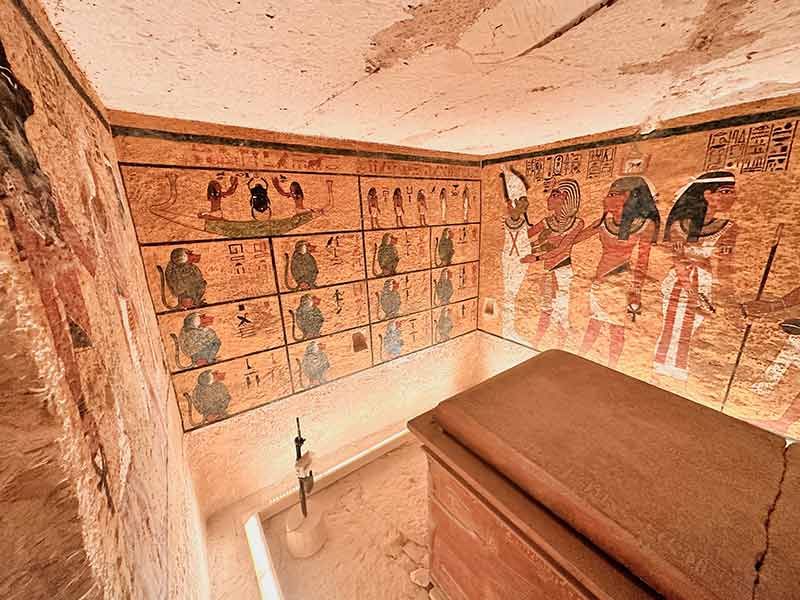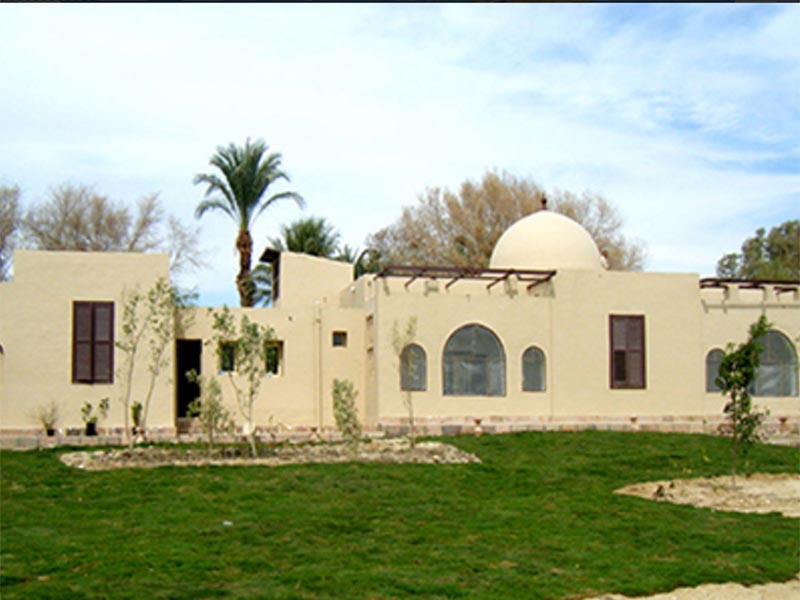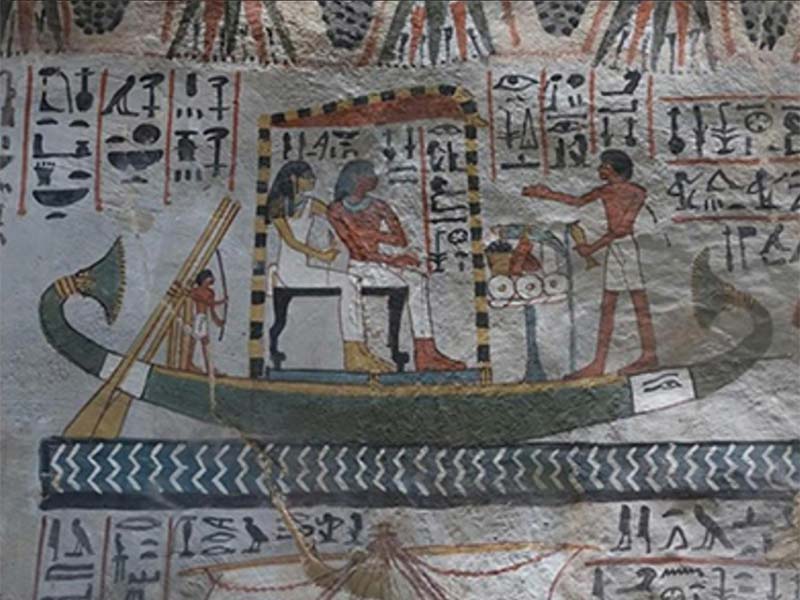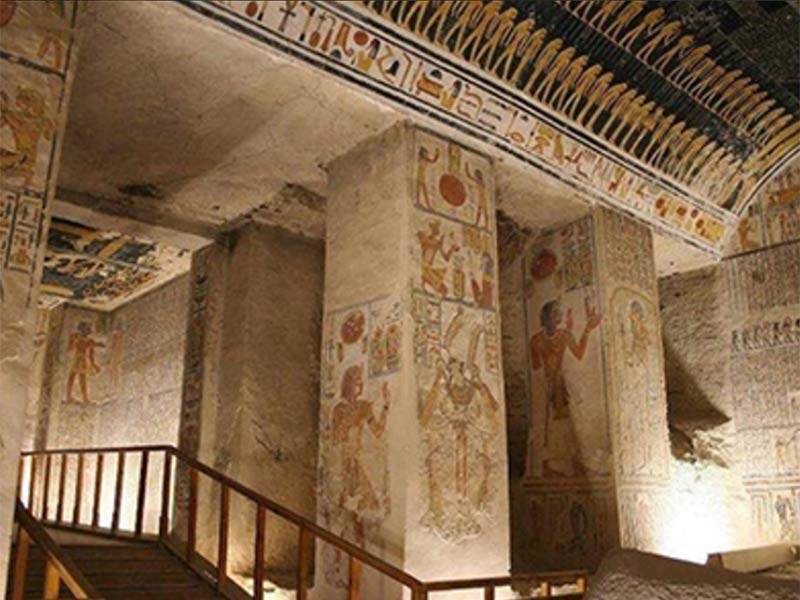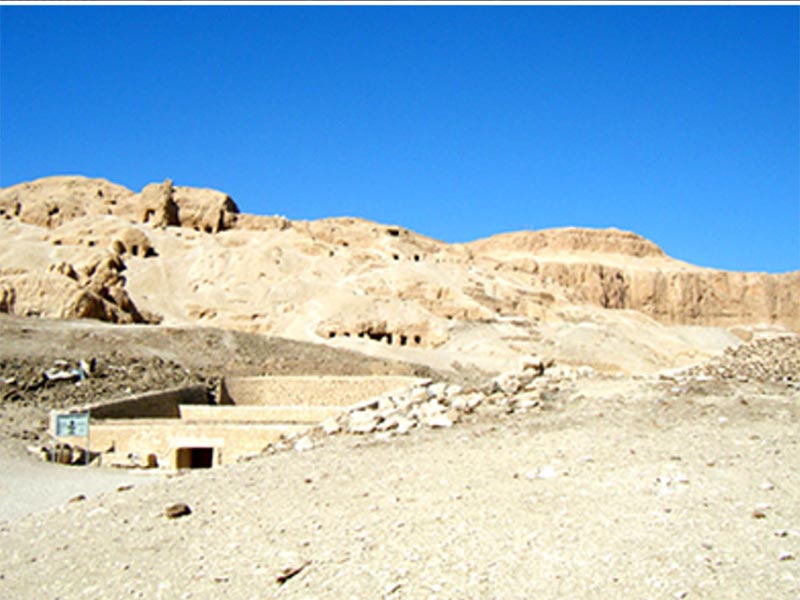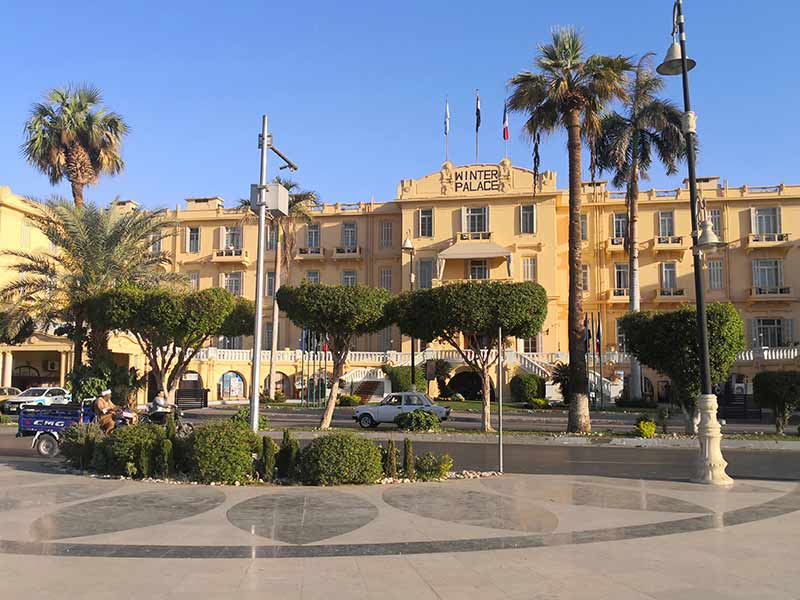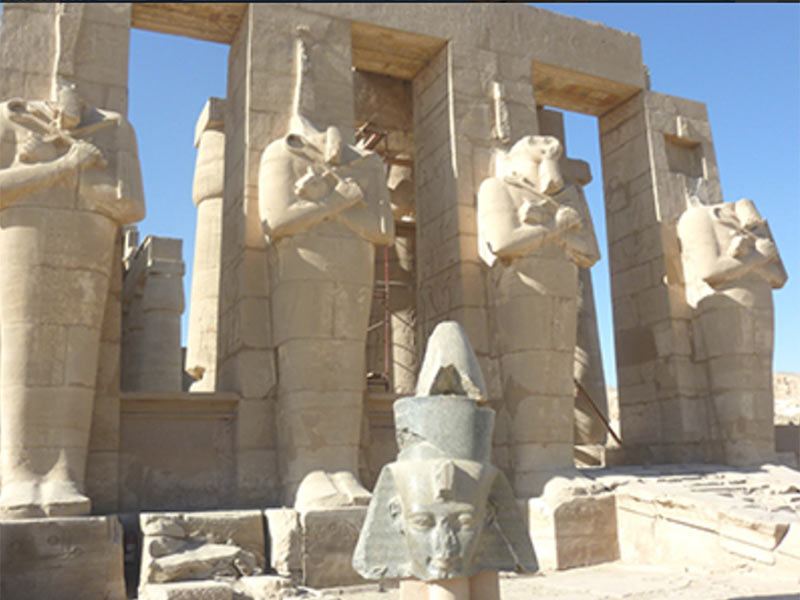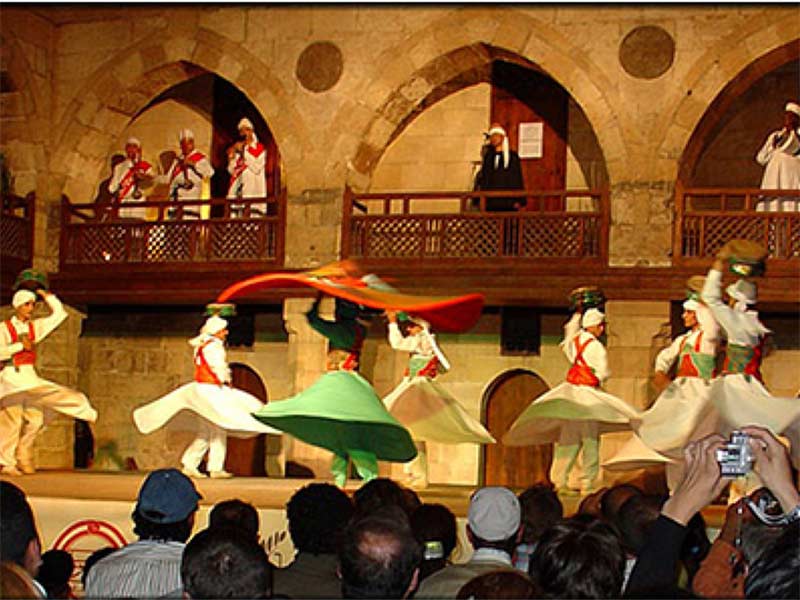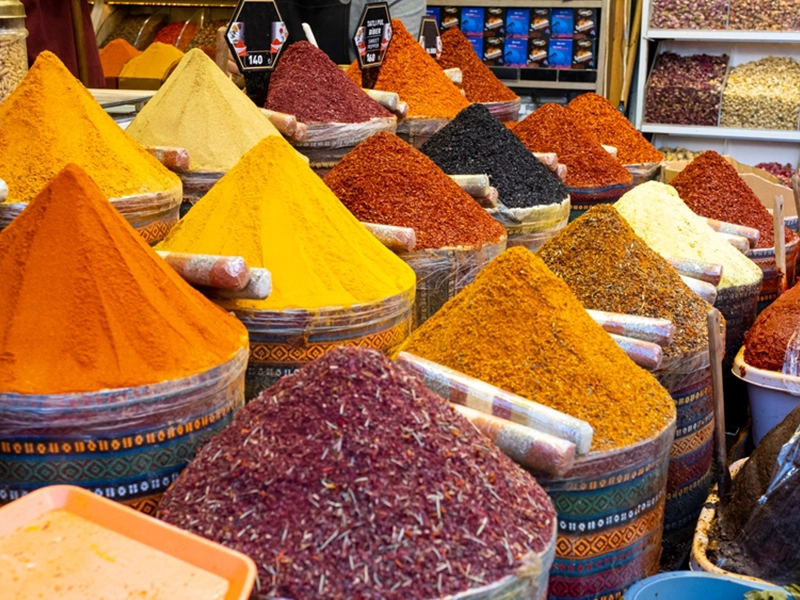- Overview
- Trip Outline
- Trip Includes
- Trip Excludes
- Gallery
- Booking
- FAQ
Luxor Full-Day Private Tour: East Bank and West Bank Highlights
Introduction
Experience Luxor's best with a full-day private tour. Explore both the East and West Banks' highlights. Discover ancient wonders and immerse yourself in the city's rich history.
Tour Itinerary
East Bank
1. Temple of Karnak
Begin your journey at the Temple of Karnak. Marvel at its colossal columns and intricate hieroglyphics. Learn about its historical significance.
2. Luxor Temple
Next, visit Luxor Temple, a masterpiece of ancient Egyptian architecture. Admire its grandeur and explore the Avenue of Sphinxes.
West Bank
3. Valley of the Kings
Cross the Nile to the West Bank. Start at the Valley of the Kings. Explore four royal tombs, including those of Ramses IV, Ramses III, and Merenptah. Optionally, visit the tomb of King Tutankhamun.
4. Temple of Hatshepsut at Deir el Bahari
Proceed to the stunning Temple of Queen Hatshepsut. Marvel at its unique architecture. Learn about Egypt's only female pharaoh.
5. Colossi of Memnon
Admire the colossal statues of Amenhotep III, known as the Colossi of Memnon. These statues date back to the era of King Amenhotep III.
6. Temple of Medinat Habu
Explore the Temple of Ramses III. Discover its stunning artwork and well-preserved structures.
Highlights of the Tour
- Valley of the Kings: Explore royal tombs and admire ancient paintings.
- Temple of Hatshepsut: Marvel at the unique architecture of Queen Hatshepsut's temple.
- Colossi of Memnon: See the impressive statues of Amenhotep III.
- Temple of Karnak: Wander through this vast complex with towering columns.
- Luxor Temple: Conclude with a visit to this iconic temple dedicated to the Theban Triad.
Valley of the Kings
Morning Pickup
Start with a pickup from your hotel in central Luxor or the harbor. An air-conditioned vehicle will transport you for a full-day, 8-hour tour.
Valley of the Kings
First, visit the Valley of the Kings on the West Bank. Explore four royal tombs, including those of Ramses IV, Ramses III, and Merenptah.
Optional: Tomb of King Tutankhamun
Next, see the famous tomb of King Tutankhamun. This young king reigned from age 10 to 19. Get a glimpse of his royal mummy in his tomb.
Tomb of Ramses III
Explore the tomb of Ramses III, designated as KV 11. Admire its colorful painted reliefs and depictions of the king before the gods. Note the unusual secular scenes in side rooms.
Tomb of Merenptah
Visit the tomb of Merenptah, Pharaoh and son of Ramesses II. Discover the model of royal tombs and view detailed decorations. Howard Carter discovered this tomb in 1903.
Tomb of Ramses IV
Discover the tomb of Ramses IV (KV 2). The walls display vibrant hieroglyphics from various Egyptian texts. Observe the beautiful scene of goddess Nut on the ceiling.
Temple of Hatshepsut at Deir el-Bahari
Temple Visit
After the tombs, visit the Temple of Queen Hatshepsut at Deir el-Bahari. Queen Hatshepsut was Egypt’s only female Pharaoh. Her temple is a stunning architectural feat.
Colossi of Memnon
Statue Viewing
See the Colossi of Memnon, the two largest ancient statues in Egypt. They date back to the era of King Amenhotep III.
Temple of Karnak
Temple Exploration
Next, visit Karnak Temple on the East Bank. Explore its vast complex, including the Avenue of Sphinxes, the Hypostyle Hall with 134 giant columns, and the Sacred Lake. Admire the Obelisks of Queen Hatshepsut and Thutmose I.
Temple of Amun
Visit the Temple of Amun, part of the Karnak complex. It features intricate designs of lotus and papyrus. Karnak stands as one of the most beautiful ancient monuments in Egypt.
Luxor Temple
Temple Highlights
Conclude at Luxor Temple, dedicated to the Theban Triad of Amun-Ra, Mut, and Khonsu. Admire the granite statues of Ramses the Great.
Avenue of Sphinxes
Avenue Walk
Stroll along the Avenue of Sphinxes, which once connected Luxor Temple to Karnak Temple. Today, only a few hundred meters remain, but it remains impressive.
Optional Sites (Pass By)
Additional Sites
Pass by notable sites including the Obelisk of Thutmose I, the Tombs of the Nobles, Howard Carter House, Temple of Merenptah, and more.
Additional Notes
The tour provides a comprehensive exploration of Luxor’s major attractions. Enjoy insightful commentary from your guide and comfortable transportation throughout the day.
Transportation and Guide
Travel in an air-conditioned vehicle. Enjoy the insights of a knowledgeable guide who will enrich your experience.
Duration and Logistics
The tour lasts approximately 8 hours. Hotel pickup and drop-off in central Luxor or the harbor are included for your convenience.
Additional Information
Entrance fees to the archaeological sites are not included. Fees may vary for optional sites like the Tomb of King Tutankhamun. Bring refreshments and snacks, especially in hot weather.
Book Your Tour Today
Don't miss the chance to delve into the wonders of ancient Egypt. This exclusive tour of Luxor's East and West Banks offers an enriching and unforgettable adventure.
Booking and Cancellation Policy
Booking Policy
- Advance Booking: Book your tour at least 48 hours in advance.
- Booking Confirmation: Receive a confirmation email with your tour details.
- Payment: Full payment is required at the time of booking. Major credit cards and PayPal are accepted.
- Special Requirements: Inform us of any special requirements at the time of booking.
Cancellation Policy
- Free Cancellation: Cancel up to 24 hours before the tour start time for a full refund.
- Late Cancellations: Cancel less than 24 hours before the tour start time for a 50% cancellation fee.
- No-Show Policy: No refund for no-shows without prior cancellation.
- Rescheduling: Reschedule your tour up to 24 hours before the start time without additional charges, subject to availability.
- Cancellation by Us: If we need to cancel due to unforeseen circumstances, you will receive a full refund or the option to reschedule.
- Private Tour
- Transport by air-conditioned vehicle
- Hotel pickup and drop-off in Luxor.
- Program like mentioned above.
- Qualified Egyptologist guide
- Bottled mineral water
- Travel insurance and all kind of insurances.
- Meals and drinks not mentioned.
- Tips for guide, drivers...
- Anything that is not mentioned in the program.
- Before the tour you have the possibility of optional hot air ballooning.
- Tomb of Tutanchamun
- All entrance fees cost 36 USD per person
o Our Luxor tour package typically includes transportation to and from your accommodation in Luxor, guided visits to major attractions such as the Valley of the Kings, Temple of Hatshepsut, and Karnak Temple, as well as entrance fees to designated sites. Please refer to the tour description for detailed inclusions.
o The tour typically lasts for about 8 hours, starting in the morning and concluding in the afternoon. However, actual duration may vary depending on traffic conditions, group size, and other factors.
o Yes, hotel pickup and drop-off services are included in the tour package. Our air-conditioned vehicles will pick you up from your central Luxor hotel or designated meeting point at the specified time.
o Meals are not included in the tour package. However, there will be opportunities to purchase food and beverages at designated stops or during free time periods. We recommend bringing snacks and staying hydrated throughout the tour.
o Yes, the tour is suitable for participants of all ages. However, please note that some attractions may involve walking or uneven terrain, so comfortable footwear and appropriate attire are recommended, especially for elderly participants.
o We recommend bringing essentials such as sunscreen, a hat, sunglasses, a camera, and a refillable water bottle to stay hydrated during the tour. Comfortable walking shoes and appropriate clothing for the weather are also advised.
o While the tour follows a set itinerary to cover major attractions, we may be able to accommodate specific requests or preferences whenever possible. Please contact us in advance to discuss any customization options.
o Some sites may have limited accessibility for wheelchair users due to historical architecture and terrain. Please contact us in advance to discuss any accessibility concerns, and we will do our best to accommodate your needs.
o The tour will proceed rain or shine, as most attractions are located outdoors. In the event of severe weather conditions or safety concerns, we may modify the itinerary or provide alternative arrangements. We will keep participants informed of any changes.
o Please refer to our booking and cancellation policy for detailed information on cancellation fees and refund eligibility. If you have any further questions about cancellations, feel free to contact us for assistance.

